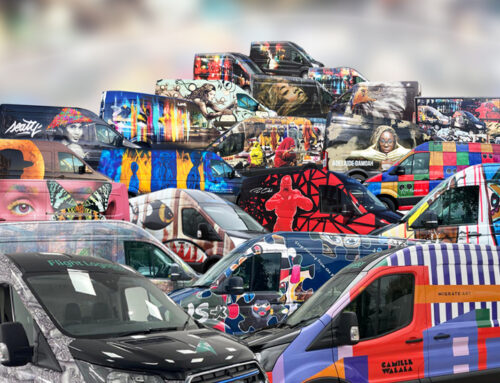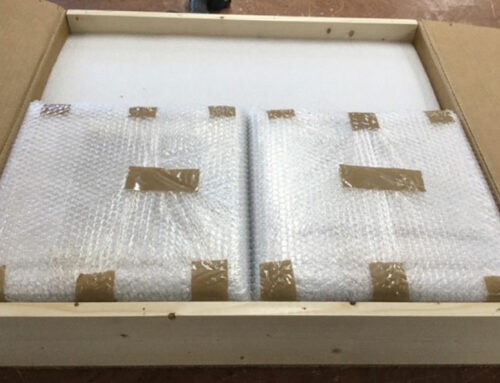If you understand the volumetric system (explained here) when shipping your artwork, then you’ll know that sometimes it makes better sense to remove a painting or print from its stretchers, rolling it up, and packing it side by side with the collapsed stretchers. Doing this lessens the overall volume of the shipment and therefore the cost to transporting art it to its final destination where it is simply re-stretched.
As highlighted in the above video, the artwork is first wrapped in acid free paper which protects it from chemical damage, then both it and the stretchers are separately covered in bubble wrap.
They are then bound together by adhesive tape before being placed in a bespoke tri-wall case with foam protection/support. Tri-wall is made up of 3 layers of corrugated cardboard anchored at the sides by wooden struts protecting the contents in a strong, but lightweight packaging solution.
For higher value, heavy, or very fragile items, a plywood crate would be preferable.
Over the weeks we have been sharing videos involving different ways of packing art from tri-wall cases to large plywood A-framed crates. Each video offers a guide for how each is prepared.
Robust and appropriate art packing is critical for insurance cover and the safety of your precious art investment – for more information on our packing services CLICK HERE














